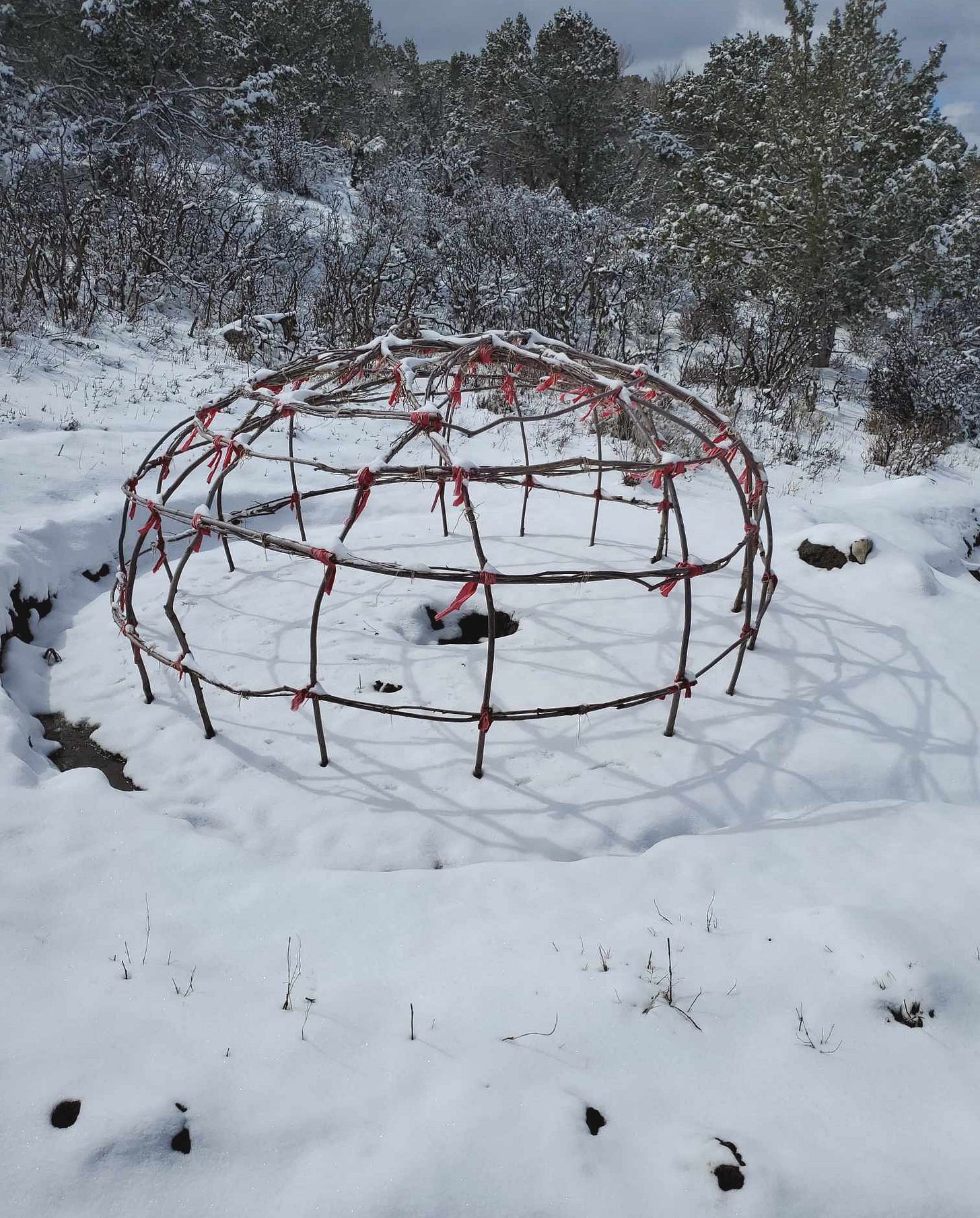We arrived home well after dark to the twinkling stars and cold winter wind, a silent procession across the bridge to the yurt, past the midnight goats glowing in the moonlight, the sleeping chickens; our foreheads anointed with a fragrant paste and our child asleep in arms.
After I built up the fire, Scotty went to milk the goats and I sat outside in the old rocking chair to look up at the stars and the mountain, also glowing in her white shawl of snow, like a giant in the night, ever watching over us.
I asked her then, the mountain, so regal and silent, what her name was.
I heard a name with “x” and “ch” and “nuk", a name foreign to my tongue but beautiful to my heart. I asked her to repeat it so I could learn to speak it, but she just emphasized the “nuk” or “nok”, which reminded me of my time learning the Quechua language in the Andes of Peru, some ten years ago.
I had met a local in Cuzco, who shared a fascinating fact about the original Quechua language with me. Originally, before the Spanish invasion, their language had no word for “I”. When the Spanish came, evolving the consciousness and way of life of a hearty mountain people, they introduced the concept (at least linguistically) of the word “I”, or “me”. To compensate for the linguistic differences, I was told, the Quechua people took the first part of the their word for “we”, which is “noqanchis”, to create a word for “I”. “Noqa” (no-KAH) became the new Quechua word for “I”.
Funny how we centralize so much of our experience around a concept that is actually foreign to various peoples across the planet, cultures where the we overrides the I in relevance and importance.
I was told recently, through various scientific studies of the development of the human brain, that the human being/brain evolved to live in groups on average of about 150 closely related people.
Let that sink in for a moment.
In a world where hundreds of thousands (tens of millions?) of us live in complete isolation or in small family units, tucked in among a disconnected grid-work of other randomly isolated and walled-in people, each in their own home with their own sources of income, their own prolific (or non-prolific) material possessions, their own stories and struggles and personal trajectories — here we are, living alone, with a few coworker friends or neighborly acquaintances, play groups or school friends, meanwhile having physiologically evolved for millennia to live, day in and day out, within large extended family groups.
It seems we are actually, literally, living in opposition to our biological blueprint. We are designed to be one among the many, a thread within a clan of interwoven support, familiarity, protection, belonging. 150 people. Can you imagine traversing landscapes with 150 people who intimately and inescapably belonged to you and to whom you belonged? A group so connected that to lose one or two people was to lose a part of yourself. Really though, like a the loss of a finger or foot.
Our brains developed in the presence of WE.
And this extended family group was our social, ritual, economic, food and shelter security, with invested interest in each member’s well being, not because of its profitability but because that is the path of Life. That is how this beautiful green earth guided us to evolve, to survive, over hundreds of thousands of years.
✧ ✧ ✧
Poem
sweeping the rug, something old is returning, cleaning the hearth, making folk faith from the ashes of the fifth sun, setting slowly over those western hills. the earth is a clay bead shaped by wind and wing alike something old, something old is returning
✧ ✧ ✧
Thank you for reading this edition of Wild Leaf. May it be of benefit to you and yours. If you like what you read, consider becoming a paid subscriber, or, if you don’t want to pay for a monthly subscription, you can always, Buy Me A Coffee.
Much love,
Leah





